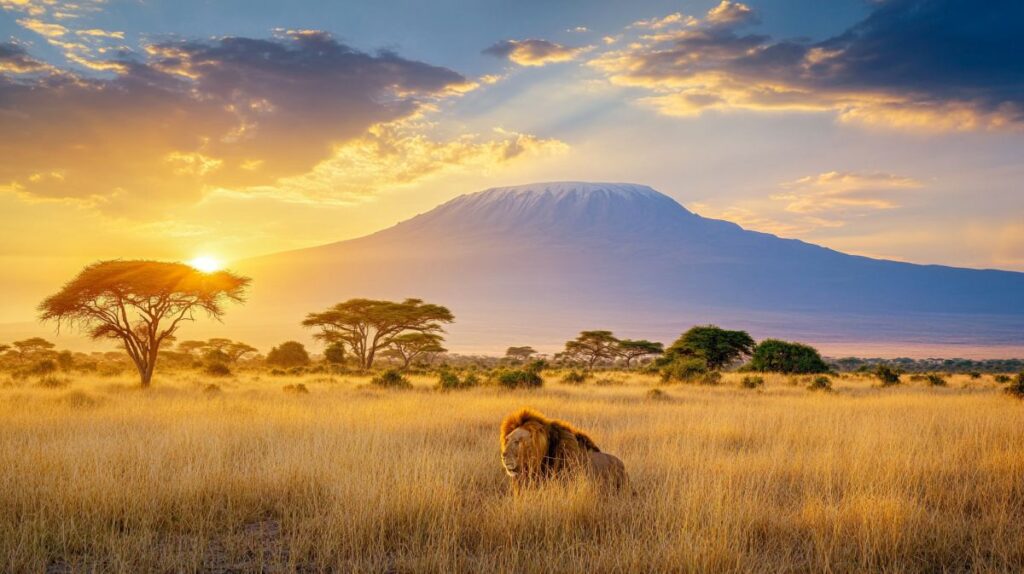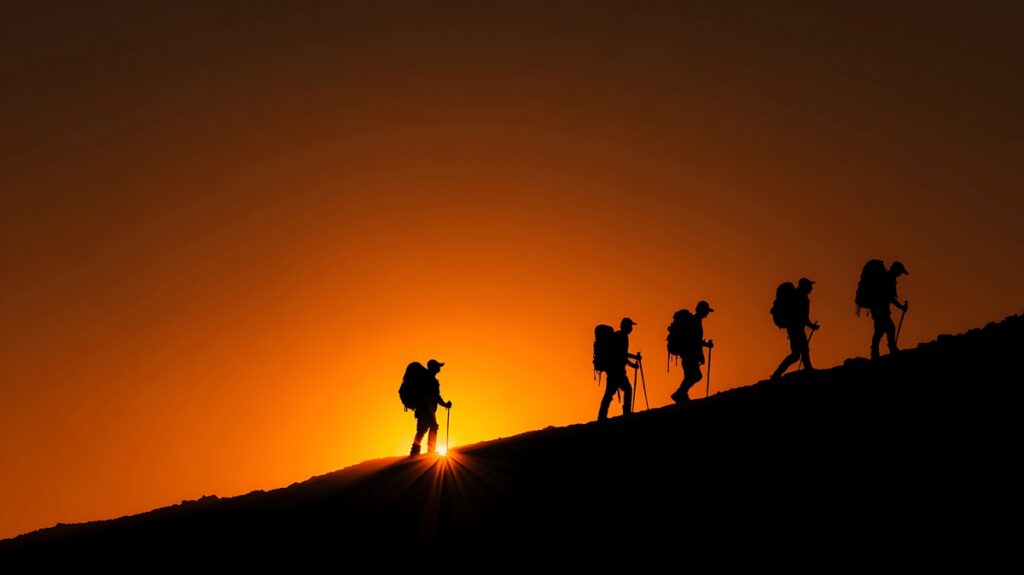
Mount Kilimanjaro isn’t just Africa’s tallest mountain – it’s a test of endurance, patience, and mindset. When people ask how long does it take to climb Mount Kilimanjaro, they’re really asking something bigger: how much time does it take for your body to adapt to the mountain’s thin air, and how long can your spirit hold steady in the cold, breathless dark? There’s no single answer. But we’ll break down what’s typical, what’s smart, and what’s pushing your luck.
The Short Answer: 5 to 9 Days (But That’s Only Part of It)
Most climbers take between five and nine days to summit Kilimanjaro and descend. The variation depends largely on which route you choose and how well your body handles altitude. Technically, yes – you can reach the top in five days. But whether that’s wise is another question entirely.
Here’s the thing: Kilimanjaro’s altitude gain is massive, and you’ll go from tropical forest to icy glacier in less than a week. The air at the summit (5,895m) holds roughly half the oxygen of sea level. That’s why most experts – and anyone who’s actually done it – strongly recommend longer routes that give your body more time to acclimatise.
If you rush it, you risk altitude sickness, fatigue, and ultimately, failure to summit. That’s not dramatic; it’s just physiology. So, while it’s technically possible to do it fast, we’d say 7 to 8 days is the sweet spot for most trekkers.
Comparing Kilimanjaro’s Main Routes
Kilimanjaro isn’t one mountain path – it’s a network of routes with different personalities. Some are scenic and gentle, others punishingly steep. Choosing the right one affects not only how long it takes, but how enjoyable the journey feels.
Marangu Route (5–6 Days)
Known as the “Coca-Cola Route,” this is the only one with hut accommodation instead of camping. It’s also the shortest and most direct path to Uhuru Peak. The catch? It’s steep, less scenic on descent, and has one of the lowest success rates due to poor acclimatisation time. Fast doesn’t always mean efficient.
Machame Route (6–7 Days)
The Machame Route – often called the “Whiskey Route” – is arguably the most popular. It’s stunning, varied, and a bit more challenging physically, but offers excellent acclimatisation because of its “climb high, sleep low” profile. Expect six to seven days of trekking through rainforest, moorland, alpine desert, and glacier.
Lemosho Route (7–8 Days)
This is one for those who want to savour Kilimanjaro. The Lemosho Route starts on the quieter western side and merges with the Machame near the Shira Plateau. It’s longer, yes, but the views are among the best – rolling valleys, vast skies, and a gradual climb that’s kind to your lungs. Success rates here are high for a reason.
Rongai Route (6–7 Days)
Approaching from the north, Rongai is less crowded and drier – good news if you prefer peace and clear skies. The terrain is gentler, but the final summit push is still intense. It’s a solid choice if you’re trekking outside the main season or want something less touristy.
Northern Circuit Route (8–9 Days)
If time (and budget) aren’t constraints, this is the crown jewel. The Northern Circuit takes you the long way round, with days of slow, steady acclimatisation and sweeping views of Kenya and Tanzania. The summit night is still brutal, but your odds of success are the highest of all routes.
And if you’re curious about other trekking routes to Uhuru Peak, we’ve got a full breakdown there.
Why Longer Is (Usually) Better

Kilimanjaro rewards patience. Each extra day gives your body a better chance to adjust to the thin air. Those who take 8 or 9 days often look stronger on summit day compared to those who power through in 5. Altitude sickness doesn’t care how fit you are – it’s about how quickly your body can adapt to less oxygen. That’s why acclimatisation hikes (“climb high, sleep low”) are crucial.
Besides, the longer routes tend to be more scenic and less crowded. You’ll have more time to absorb the enormity of the mountain instead of just suffering through it. And trust us: there will be moments of suffering.
A Day-by-Day Breakdown (Roughly)
Every itinerary varies slightly, but here’s a general feel of what your climb might look like over 7 days:
- Day 1: Rainforest zone – lush, humid, and teeming with monkeys. You’ll climb from around 1,800m to 2,800m.
- Day 2: Moorland – shrubs, mist, and your first taste of altitude.
- Day 3: Shira Plateau – wide open skies and a slower pace as the air thins.
- Day 4: Acclimatisation day. You’ll go up to about 4,600m and descend back down to sleep lower.
- Day 5: The alpine desert – barren and beautiful.
- Day 6: Summit night. You’ll leave camp around midnight for the gruelling ascent to Uhuru Peak, reaching the top around sunrise. Then, you descend immediately.
- Day 7: Final descent through the forest, knees screaming, heart full.
How Altitude Affects Your Climb
Let’s not sugar-coat it: altitude is the biggest challenge on Kilimanjaro. Around 75% of climbers experience mild symptoms – headache, nausea, dizziness. Some get hit harder. The body needs time to create more red blood cells to carry oxygen, and that doesn’t happen overnight. That’s why a slow, steady pace (and adequate hydration) is non-negotiable.
If you’re wondering whether medication helps, acetazolamide (Diamox) is sometimes used preventively, but you should only take it under medical advice. There’s no magic pill for altitude – it’s mostly about pacing and respecting the mountain.
Preparation Matters (More Than You Think)
Training for Kilimanjaro isn’t about sprinting up hills. It’s about endurance. Long hikes on uneven terrain, carrying a moderate backpack, are your best preparation. Ideally, build up months in advance – your legs will thank you. And mentally? Expect discomfort. The mountain will test you in ways that are more psychological than physical.
It’s also worth planning your climb during a good weather window – January to March or June to October are typically ideal. Fewer storms, better visibility, and more consistent temperatures (well, relatively speaking)
So… How Long Does It Really Take?
If we had to summarise it plainly:
- Minimum: 5 days (risky, not recommended)
- Recommended: 7 to 8 days
- Best acclimatisation: 8 to 9 days
You’ll spend two of those days on the ascent and descent through rainforest, the rest moving gradually higher through changing ecosystems until the air bites and your breath comes in short, icy gasps. The climb to the summit isn’t just about reaching the top; it’s about giving yourself enough time to get there safely and come back down again.
Kilimanjaro rewards respect. You can’t conquer it – you can only work with it. Give it time, and it’ll give you a sunrise you’ll never forget. Rush it, and the mountain will simply send you back down before you’re ready.

